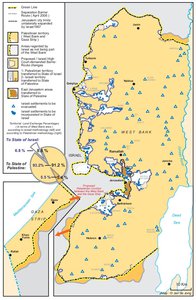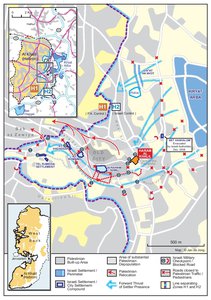HEBRON
Map Details
As one of the four holiest cities of Islam (along with Mecca, Medina and Jerusalem) as well as one of the
four holiest cities of Judaism (along with Jerusalem, Safed and Tiberias), the status of the city of Hebron is
an important issue to be settled under any final status arrangement aimed to resolve the Palestine-Israel
conflict. The religious significance of Hebron stems mainly from the fact that both Muslims and Jews
believe that Abraham (Ibrahim for Muslims), the father of Judaism, Christianity and Islam, is buried there in
the Al-Ibrahimi Mosque (Cave of the Patriarchs or Machpela for Jews), together with his son Isaac and his
grandson Jacob. Before the 1930s, Hebron was a predominantly Muslim Arab city with a small Jewish
minority. However, as Jewish immigration to and Zionist activities in the city (and country) increased from
the second half of the 19th Century, tensions between Muslims and Jews rose, eventually escalating into
violence during the Al-Buraq riots of 1929, when 67 Jews were killed in Hebron. After the beginning of the
Arab Revolt in 1936, the Jewish community left the city in its entirety. Hebron then remained an all-Arab
city until Jewish settlers established the Kiryat Arba settlement on its outskirts in 1968, a year after the Six-
Day War. In 1979, a small group of settlers from Kiryat Arba entered the city center and founded a new
settlement there, after which three more settlements were established in central Hebron, the last of them in
1984.
The 1994 Al-Ibrahimi Mosque Massacre in Hebron led the Israeli authorities to impose a new regime of
security arrangements on Hebron that eventually resulted in the formal division of the city under the 1997
Protocol Concerning the Redeployment in Hebron into Palestinian zone H1, which comprises about 80% of
the city, and Israeli zone H2. The first of these security measures imposed by Israel on
Hebron – officially with the aim of preventing Palestinian revenge attacks on Israeli settlers – were the
imposition of a month-long house curfew on Palestinian citizens in Hebron and the indefinite closure of
about 520 Palestinian businesses in the heart of the city. Eventually Israel closed off Ash-Shuhada Street,
the major commercial thoroughfare in Hebron, in its entirety. As of 2014, it remains cordoned off, with the
shop fronts sealed shut.
This closure and the division of the city since the 1997 Hebron Protocol have resulted in the near total
collapse of the Hebron economy, leading thousands of Palestinians to leave the city in search of economic
opportunities elsewhere. A 2004 citywide survey showed that over 1,000 houses in central Hebron -
making up more than 40% of the Palestinian residences in the area - had been vacated since the 1994
massacre. Furthermore, over 1,800 Palestinian businesses in the city center (more than 75% of the total
number) had closed.
In March of 2007, 30 Jewish settler families and 14 individuals moved into an unfinished multi-story building
- dubbed Beit HaShalom - on the "Worshippers Way" linking Kiryat Arba, the Cave of the Patriarchs and the
four H2 settlements. While then Israeli Defense Minister Amir Peretz initially stated that the settlers would
only be allowed temporarily, Israeli Prime Minister Ehud Olmert later declared that he would not allow
Peretz to evacuate them if they had legally acquired ownership of the structure. However, in November
2008 the Israeli High Court ordered the evacuation of the settlers because their ownership documents were
forged. In response to the court decision, the settlers in Beit HaShalom vowed to "go to war" to prevent
their evacuation. A week of settler violence against Palestinians followed, until Beit HaShalom was finally
evicted after a surprise raid of the Israeli army on the compound in early December 2008. Contrary to the
earlier ruling of the Israeli High Court, however, the District Court ruled in 2012 that the settlers had
purchased the structure legally, despite having forged ownership documents. This ruling was confirmed by
the Israeli Supreme Court in March 2014. It is now up to the current Israeli Defense Minister Moshe
Ya'alon to decide whether Beit HaShalom can be established as the fifth official settlement in H2 or not.
Over the years, the settler population of Kiryat Arba has grown to over 7,500, while the Israeli controlled
H2 zone in Hebron is currently populated by about 800 Jewish settlers, 200 of which are Yeshiva
students. Thousands of Israeli soldiers are stationed in Hebron to protect these settlers. The 40,000
Palestinians living in H225 as well as the Palestinian residents of the surrounding H1 areas have seen their
freedom of movement severely restricted by means of 18 permanently staffed checkpoints throughout the
city as well as over 120 physical obstacles that have been deployed by the Israeli army. Palestinians are
not allowed to drive on a number of roads without special permission, which is near to impossible to obtain,
and on at least one street Palestinian foot traffic is segregated from Israeli traffic. While most of the
restrictions were introduced after the 1994 massacre, many were intensified during the Second Intifada that
began in 2000. Today, the Palestinians living in this area continue to be subject to the "harshest
restrictions on movement of any population in the West Bank." Worst off are the approximately 6,000
Palestinians living in the "restricted zones" surrounding the four Israeli settlements in H2, since they are not
only prohibited from moving around freely within their own city, but also "face serious challenges in
accessing basic services, including schools, emergency health services, and water and sanitation." To
make things worse, Palestinians in Hebron are regularly confronted with violence by Jewish settlers as well
as Israeli forces.
Related Maps
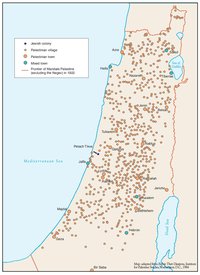
OTTOMAN PALESTINE, 1878
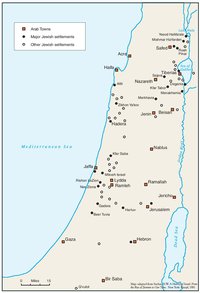
ARAB TOWNS AND JEWISH SETTLEMENTS IN PALESTINE, 1881-1914
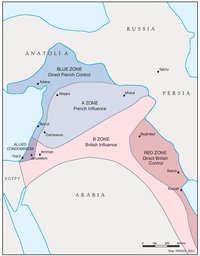
THE SYKES-PICOT AGREEMENT, 1916
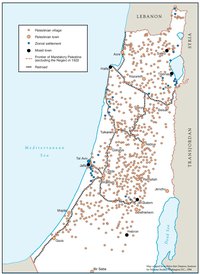
THE BEGINNING OF THE BRITISH MANDATE, 1920
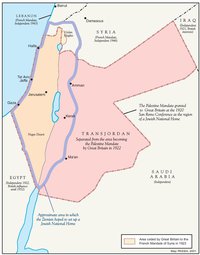
PALESTINE UNDER THE BRITISH MANDATE
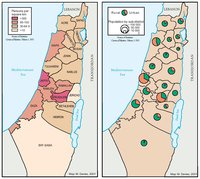
THE DEMOGRAPHY OF PALESTINE, 1931
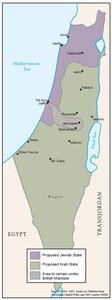
THE PEEL COMMISSION PARTITION PROPOSAL, 1937
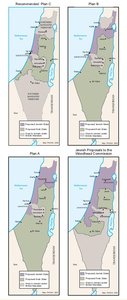
THE WOODHEAD COMMISSION PARTITION PROPOSALS, 1938
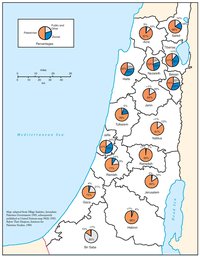
PALESTINIAN AND ZIONIST LANDOWNERSHIP BY SUB-DISTRICT, 1945
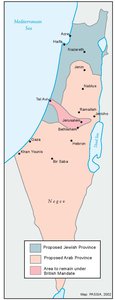
THE MORRISON-GRADY PARTITIONED TRUSTEESHIP PLAN, 1946
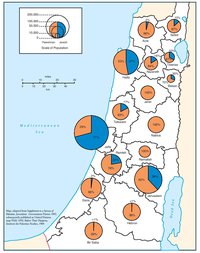
POPULATION OF PALESTINE BY SUB-DISTRICT, 1946
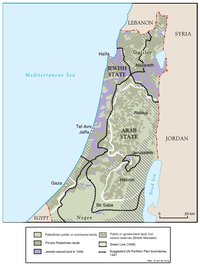
LAND OWNERSHIP IN PALESTINE, 1948
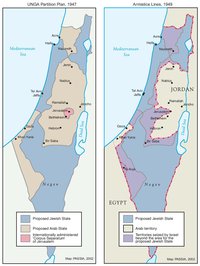
THE UNGA PARTITION PLAN, 1947 – THE 1948 WAR & THE 1949 ARMISTICE LINES
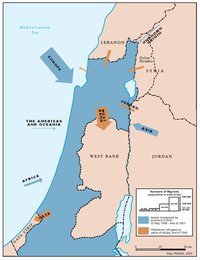
POPULATION MOVEMENTS, 1948-1951
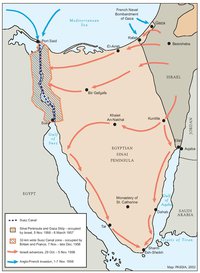
THE SUEZ WAR, 1956
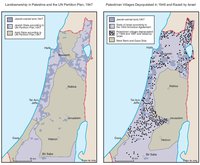
LAND OWNERSHIP IN PALESTINE AND THE UN PARTITION PLAN - PALESTINIAN DEPOPULATED AND DESTROYED VILLAGES, 1948-1949
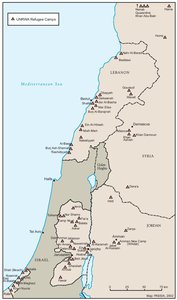
THE PALESTINIAN DIASPORA, 1958
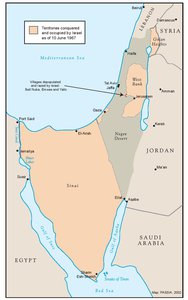
THE NEAR EAST AFTER THE JUNE 1967 WAR
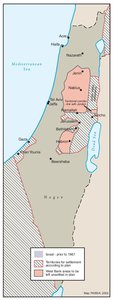
THE ALLON PLAN, JUNE 1967
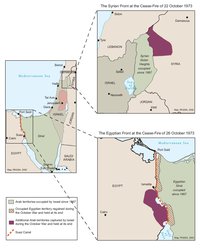
THE OCTOBER WAR, 1973
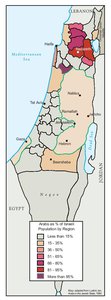
THE PALESTINIANS INSIDE ISRAEL, 1977
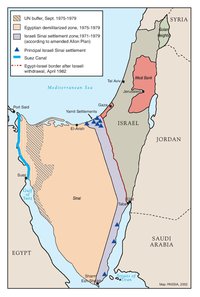
THE CAMP DAVID ACCORDS, 1978-1979
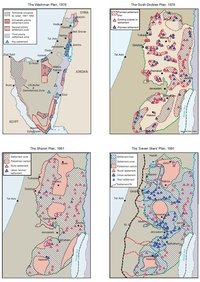
ISRAELI SETTLEMENT MASTER PLANS, 1976-1991
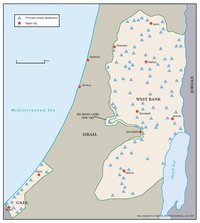
THE 1991 MADRID PEACE CONFERENCE & ISRAELI SETTLEMENTS
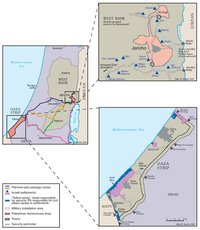
GAZA-JERICHO (OSLO I) AGREEMENT, CAIRO, 4 MAY 1994
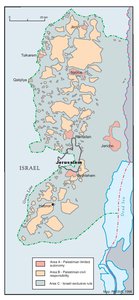
INTERIM (OSLO II) AGREEMENT, TABA, 28 SEPTEMBER 1995
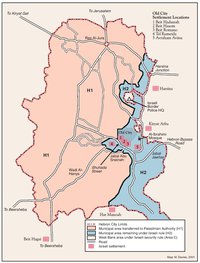
HEBRON PROTOCOL, 15 JANUARY 1997
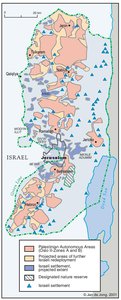
WYE RIVER MEMORANDUM, 23 OCTOBER 1998
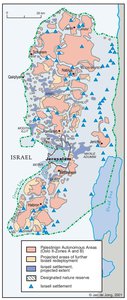
SHARM ESH-SHEIKH AGREEMENT, 4 SEPTEMBER 1999
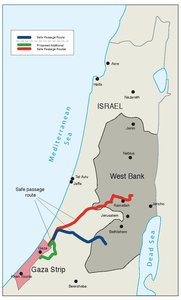
PROTOCOL CONCERNING SAFE PASSAGE BETWEEN THE WEST BANK AND THE GAZA STRIP, 5 OCTOBER 1999
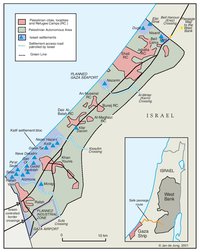
GAZA, 2000
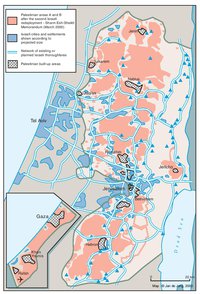
WEST BANK AND GAZA STRIP, MARCH 2000
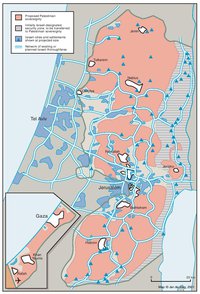
CAMP DAVID PROJECTION, JULY 2000
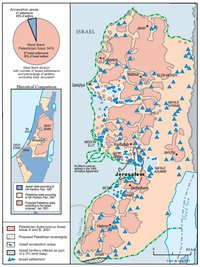
TABA TALKS PROJECTION, JANUARY 2001
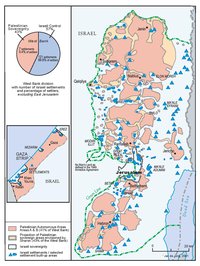
THE SHARON PROPOSAL, SPRING 2001
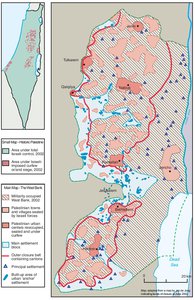
THE REINVASION OF THE PALESTINIAN TERRITORIES, 2001-2002
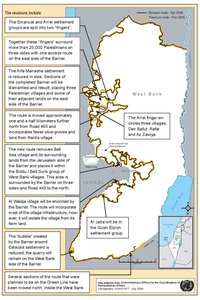
THE ROAD MAP, 2003
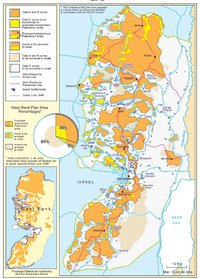
THE GENEVA INITIATIVE AND ACCORD, 2003
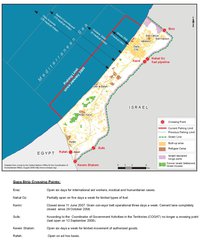
THE ISRAELI DISENGAGEMENT PLAN, 2003-2005
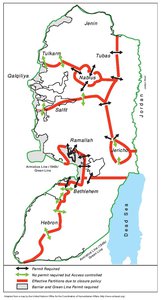
AGREED DOCUMENTS ON MOVEMENT AND ACCESS FROM AND TO GAZA, 2005
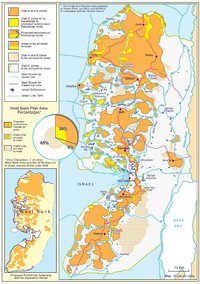
THE SETTLERS' PLAN FOR PALESTINIAN AUTONOMY, 2006
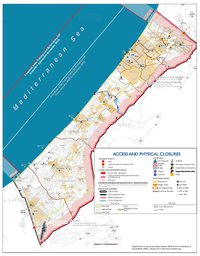
THE GAZA STRIP TODAY (2014)
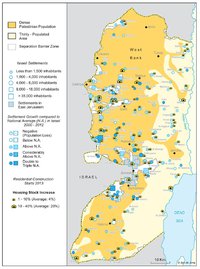
THE WEST BANK TODAY (2014)
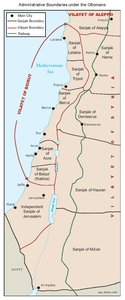
ADMINISTRATIVE BOUNDARIES
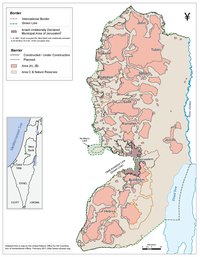
Area C
